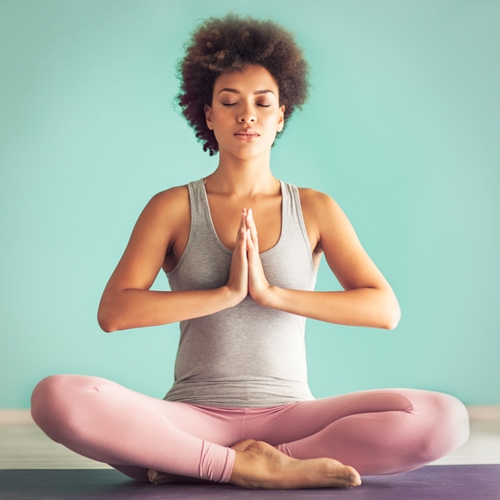
Yoga can help you sleep better at night
 With all the hustle and bustle of daily life, falling asleep each night may be a challenge.
With all the hustle and bustle of daily life, falling asleep each night may be a challenge.
If you’re feeling overwhelmed by your numerous commitments, stress can seriously affect how quickly you drift off each time you climb into bed as well as the quality of sleep you get.
During the day, whether it’s in the morning before heading to the office, on your lunch break or when you get home from work, exercising on home fitness equipment is a great way to stay committed to your fitness plan and get a great cardio session in. Pounding the belt on fitness treadmills or pushing stationary bike pedals can give you a great boost in energy, improve your mood and reduce the stress that might be building up. Your heart rate increases, strengthening your cardio health and leg muscles, and helps burn off extra calories.
Exercise has been proven to help people sleep better, but if you need some help winding down at the end of the night, consider adding an evening yoga routine to your cardio fitness plan.
All that time on elliptical machines may leave your muscles (especially in the lower half of your body) feeling tight and sore. Yoga is great for stretching to loosen up those hamstrings and increase your flexibility. This practice also focuses on deep breathing to slow your heart rate and keep you calm. Yoga also helps you become more mindful, keeping your thoughts focused on the present moment. If you’re struggling to sleep peacefully each night, try these yoga poses to achieve better slumber:
Deep breathing: To begin, sit in a comfortable position on your bed or on the floor. Gently close your eyes and let your hands rest on your thighs or at your sides. Focus on each inhale and exhale you take, slowing down your breathing. Bring your focus to the present moment.
Cat-cow: Come onto all fours with your wrists under your shoulders and your knees under your hips. On your inhale, drop your stomach toward the floor, arching your back and looking up toward the ceiling. On your exhale, round your back and gaze toward your belly button. Repeat for 4 to 5 rounds.
Forward fold: Come to a standing position with feet hip-distance apart. Gently fold forward, reaching your hands toward to the floor. Allow all of your upper body muscles to relax, so you’re hanging like a rag doll as you continue to breathe. After 5 or 6 breaths, slowly start to roll back up, taking it one vertebrae at a time until your head is the last thing to return to the starting position.
Legs up the wall: Facing a wall, sit as close as you can, then lay back and raise your legs up against the wall. You may have to scoot yourself close until your flush against the wall, and let your arms rest at your sides as you breathe deeply. This pose lets the blood flow toward your head and heart, which relieves stress.
Child’s pose: Start on all fours again, then sit your hips back and drop back onto your heels. Reach your arms forward so you feel a slight stretch in your upper back and let your head rest on the floor without engaging your neck muscles. Breathe deeply in this position for a few minutes.
Savasana: Corpse pose, or final resting pose, is where you’ll finish. Lay in your bed with your legs out straight and hands at your sides. Continue the deep, slow breathing you’ve been doing. Here you can meditate or simply stay in the present moment. You’ll feel yourself start to get sleepy and slip into a welcome slumber so you can wake up refreshed the next day.
